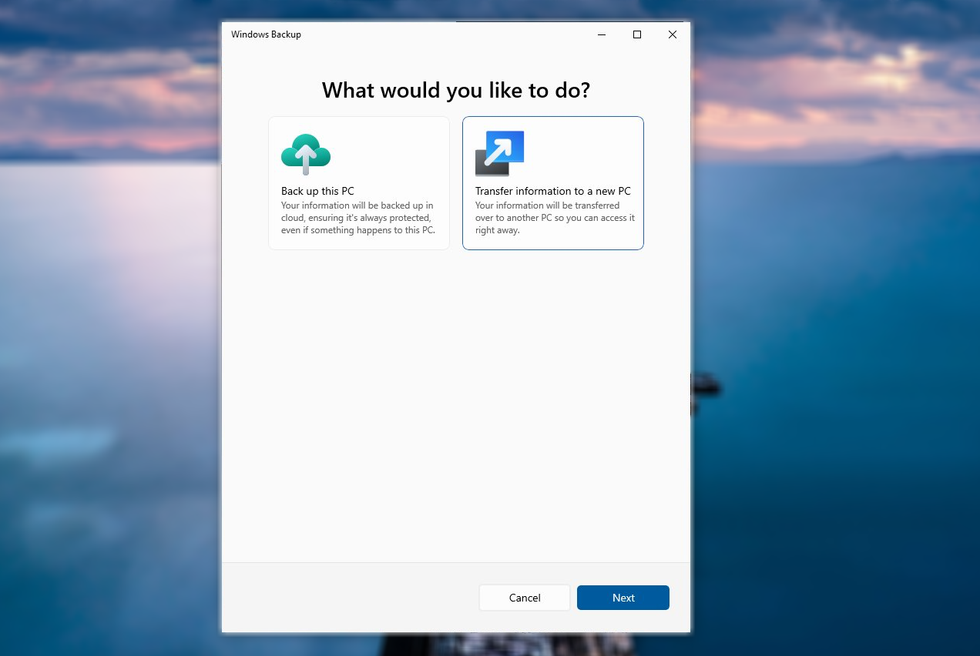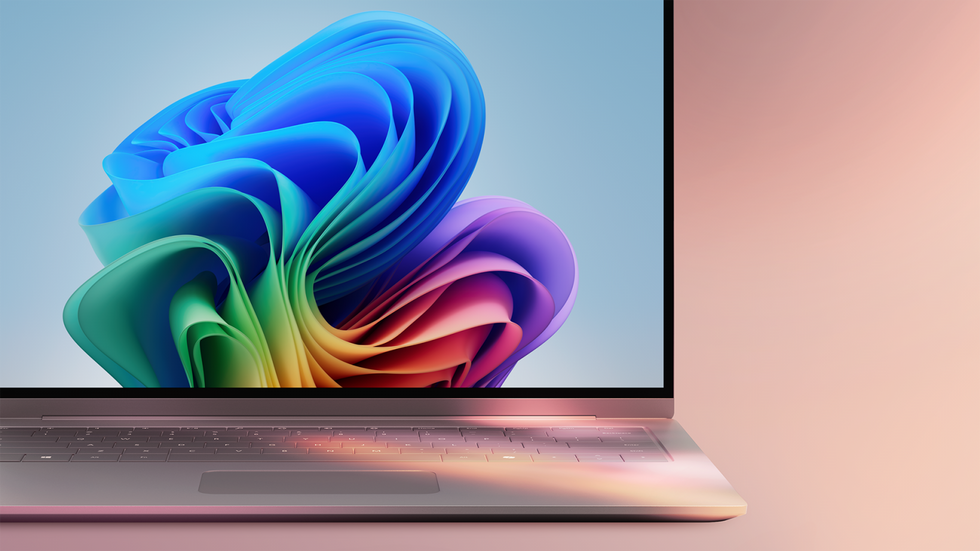Microsoft still must convince millions to ditch Windows 10 in under four months ...it's working on a new plan

Windows 10 users will need to choose between several options, including upgrading to Windows 11 via Windows Update app, switching to a brand-new laptop or desktop PC built for Windows 11 from the ground-up, or migrating to an alternative, like Linux
|CLINT PATTERSON | UNSPLASH

Beta testers have unearthed evidence of a features coming to Windows 10 to make switching easier
Don't Miss
Most Read
Latest
Microsoft is quietly working on new functionality for one of its applications that it hopes will help convince PC owners still relying on Windows 10 to make the switch to its successor. Beta testers have uncovered the existence of a new PC-to-PC migration tool that's designed to transfer personal data from Windows 10 to a new Windows 11 machine.
The work-in-progress new functionality was discovered in the latest Windows 10 preview build. Housed inside the Backup app preinstalled on every PC, it promises to move files, settings, and preferences without the usual headaches of manual transfers. For those worried about losing years of carefully configured systems and precious data, this tool could be the safety net you've been waiting for as the October 2025 support deadline approaches.

Microsoft is looking to incorporate the new functionality into the Backup app already installed on Windows 10 and Windows 11 machines
|@PHANTOMOFEARTH | X.COM | GBN
If you missed the memo, starting from October 14, 2025, Microsoft will no longer issue free software updates to fix vulnerabilities, bugs, and critical glitches in the desktop operating system. Without these, Microsoft warns that anyone who continues to use Windows 10 will be left "at greater risk for viruses and malware".
But with 53.19% of all laptops, desktop PCs and tablet running Windows still relying on Windows 10, millions are still using this soon-to-be-outdated software every day. If you're still on Windows 10, you're far from alone.
Source: StatCounter Global Stats - Windows Version Market Share
It's clear from the new features being worked on for the Backup app that Microsoft is hoping to remove as much friction as possible as it attempts to increase the number of people moving from Windows 10 to Windows 11 in the coming weeks.
The improved migration feature was uncovered by prominent leaker PhantomOfEarth in Windows 10 build 19045.6029, who posted about the as-yet unannounced feature on X, previously known as Twitter.
Posted with screenshots of the incoming tool, PhantomOfEarth wrote: "Unsurprisingly, Windows Migration is coming to Windows 10 to make it easier to move to 11 as we get closer to [End of Life]."
Unsurprisingly, Windows Migration is coming to Windows 10 to make it easier to move to 11 as we get closer to EoL.
— phantomofearth 🌳 (@phantomofearth) June 12, 2025
The migration flow in the Backup app is hidden in today's RP CU (19045.6029), can be enabled with feature ID 56242779. pic.twitter.com/23q3F1kl0m
To transfer your data between PCs running different versions of the Windows operating system, Microsoft requires both devices to be connected to the same network. You'll need to enter a confirmation code to establish a link between the two PCs, ensuring you're sending data to the correct target computer.
Once connected, you'll be able to choose from a list of categories to select which data is migrated over.
 Windows 11 reworks the design of the operating system and brings the iconic Start Menu to the centre of the screen for the first time | MICROSOFT PRESS OFFICE
Windows 11 reworks the design of the operating system and brings the iconic Start Menu to the centre of the screen for the first time | MICROSOFT PRESS OFFICE While a reluctance to switch operating systems is understandable. However, sticking with an unsupported operating system exposes you to significant risks. Without security patches, your computer becomes increasingly vulnerable to cyber threats and system bugs. Hackers actively target outdated systems, knowing they lack the latest defences.
Beyond security concerns, compatibility issues will mount. Microsoft recently extended support for its own 365 apps, including Microsoft Word, Excel and Powerpoint, but this software was due to end in October 2025.
If you're still on Windows 10, you likely have a few options before the October 14, 2025 deadline.
If your PC meets Microsoft's minimum system requirements, you can upgrade to Windows 11 free of charge through Windows Update. However, many have discovered their ageing machines fall short of these requirements, potentially resulting in "a practically unusable PC" if they force the installation.
LATEST DEVELOPMENTS
- Three and Vodafone users promised boosted phone signal at ‘no extra cost’
- There's a brand-new way to watch Sky TV, and it's on-sale from £6 today
- Your iPhone, iPad and Mac will look unrecognisable with new design update from Apple
- Best VPN deals
- Vodafone unleashes fastest broadband upgrade yet
- Apple will let you save your passport on iPhone ...but UK users miss out for now
Purchasing a new Windows 11 computer remains Microsoft's preferred route, particularly their all-new Copilot+ devices. These boast several Artificial Intelligence (AI) features that you won't find in a standard installation of Windows 11.

Copilot+ PCs are a new subsection of Windows 11 with exclusive Artificial Intelligence (AI) features
| MICROSOFT PRESS OFFICEFor those seeking alternatives, some are exploring Linux distributions to keep older hardware functional. Google is enabling disgruntled Windows 10 users to switch to its ChromeOS Flex — a variant of the software that powers its immensely popular Chromebooks.
Finally, Microsoft will allow Windows 10 users an extra year of security updates for a fee.
While Microsoft's new migration tool simplifies data transfer, it doesn't address the fundamental issue of forced obsolescence. If you're still weighing-up your options, the choice ultimately rests between accepting Microsoft's timeline, switching to new hardware, paying for extended support, or abandoning the Windows ecosystem.
More From GB News










